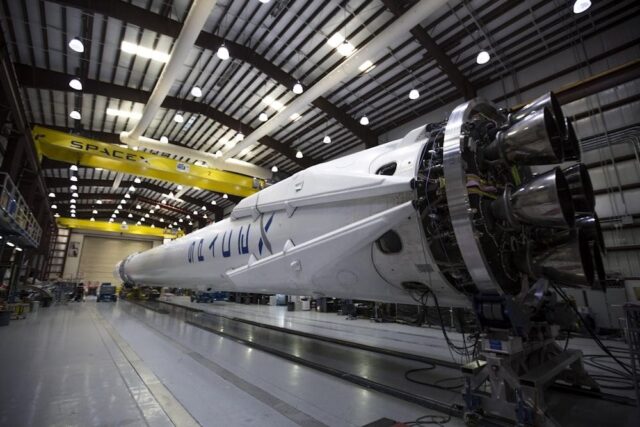
One of the most important goals that all states pursue today is to make the military and security industries more digital. AI, machine learning, big data, digital models, and other tools help speed up the creation and testing of spacecraft. This could save billions of dollars and cut shipping times significantly. Let’s look at some of the ways for flight companies to save money and make their engineering processes more effective.
Why Are the Military and Defense Industries Going Digital?
At the company level, going digital makes operations more efficient by simplifying many tasks that used to take a lot of time. A new study by McKinsey and the Aerospace Industries Association (AIA) found that making the aerospace, aviation, and defense value stream more digitally mature could free up $20 billion in yearly EBITDA. And several things are causing this change:
- New ideas in automation;
- More people aiming for increased speed and efficiency;
- Uncertainty in the supply chain requiring more efficient processes;
- Cutting-edge digital skills as a way to stay ahead of the competition
Thanks to digital change and high-tech innovations, the aircraft industry can solve many problems. And at https://military.news/, you can track all the innovations and the direction military and defense Industries are taking.
Cut Down on the Prices of Creation and Production
Physical testing is often not possible because of the high cost of flight engineering systems. The more engineers can try and improve their models under stress before putting them into mass production, the more cost-effective these projects will be. Also, research and development work on a single rocket or plane could last for more than ten years. You need to have a good reason for investing that much money. By going digital and simplifying the modeling process, engineers can cut down on the time and money needed to make new models, which changes the incentives to come up with new ideas.
As an example, Boeing will not be putting out a new platform for the first ten years of its career. The small gains for each model aren’t worth the money that would be needed to make those changes with the way technology is now. Naturally, this restriction has effects further down the line. Pratt & Whitney won’t be able to make and use a new engine if Boeing doesn’t make a 797 this decade. This will have an impact on their supply chain. Think about it this way: if making a new platform costs at least $1bn, any new platform must offer a 15% to 20% improvement over the old one in order to be worth the money.
But if an expert can only make a small change, say 5%, they need to lower the amount of money that needs to be spent to get there. SpaceX has made a brand-new engine from scratch for a quarter of the price that Pratt & Whitney would charge. This is the direct result of better ways to do tech work.
Follow up on Issues and Ensure Safety
Because of the strict safety rules that must be followed in business flight, technology and safety processes can get very complicated. DO-178, DO-331, and DO-330 are some of the aircraft qualifications that most businesses need to follow. Many ways help make these less likely with digital transformation:
- Getting data from the real world that can be put into computer models in real-time, so tests aren’t needed for unnecessary things;
- Making virtual worlds where the safety features of a digital model can be tested without putting the station or any users at risk;
- Using VR and AR to train people before putting them in more dangerous situations.
As an example, Aries is a new company that offers VR-based training. Another company, Fyr, has made a head-mounted AR-based display device. These are just some of the prominent examples highlighting the trend of digitalization in the military and defense industries.
Improve Collaboration Among Teams and Regulatory Agencies
Digital change gives providers and freelancers the tools they need to work together from afar, which is what the DOD and other agencies want. As a result, new ideas and products come out faster. Digital twins and digital danger tools, in particular, make it safe to work together from afar. Aerospace companies can give the agency a hands-on look at ideas and works in progress by giving them digital twins.
Also, cloud-based apps let internal teams work together and be open with each other. Instead of having to wait for other teams to share information about their progress, they can see drafts and ideas that are still being worked on. For instance, General Motors cut costs by 95% by using virtual communication tools in their industrial processes instead of a standard real setting.
Manage the Supply Line and Make Factories More Efficient
It’s still hard to know what will happen with supply lines in aircraft. Digital change helps makers better control and reduce risk by making everything better — from keeping track of supplies to evaluating suppliers. AI and machine learning help businesses better predict how much product they will need and look at big-picture global factors that might affect supply lines. Boeing, for example, uses information from past predictions, present demand, the availability of raw materials, the capacity and quality of suppliers. This information helps to make more accurate predictions about the cost, quality, and availability of goods.
Reduce Downtime and Shorten Repair Runs
Digital change in aircraft can cut down on system failure by simplifying the processes of making things and keeping them in good shape. Manufacturers can give more accurate production schedules, which makes it more likely that they will be kept. For example, the French company Thales uses AI and Big Data to predict repair needs and stop problems before they happen.
Final Say
The aircraft industry could make more money in less time and for less money by going digital. It has caused big changes in the industry by making it easier for new ideas, dependability, and low costs to come up with.


































